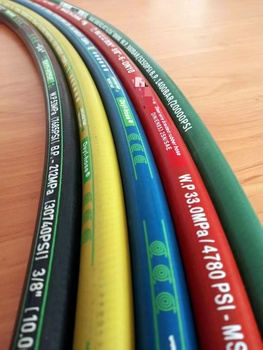335345435
Nov . 25, 2024 09:23 Back to list
hydraulic hose bulkhead fitting
Understanding Hydraulic Hose Bulkhead Fittings
Hydraulic systems are integral components in a myriad of applications, ranging from automotive to industrial machinery. One crucial element often overlooked in these systems is the bulkhead fitting for hydraulic hoses. This component plays a vital role in ensuring the efficient transfer of hydraulic fluids while maintaining system integrity and safety.
What Are Hydraulic Hose Bulkhead Fittings?
Hydraulic hose bulkhead fittings are specialized connectors designed to connect hydraulic hoses to a panel or enclosure. These fittings allow for a smooth transition of fluids from one side of a barrier to another, ensuring the hydraulic system remains sealed and pressurized. They are commonly used in applications where hoses must pass through walls, panels, or enclosures without compromising the integrity of the hydraulic system.
Design and Functionality
Typically, a bulkhead fitting consists of a male and female component. The male section screws into the panel, while the female end connects to a hydraulic hose. This design allows for a secure and leak-free connection. Construction materials usually include high-grade steel or aluminum, ensuring durability and resistance to corrosion.
The primary function of these fittings is to maintain a high-pressure seal that prevents hydraulic fluid from leaking, which could lead to system failures or hazards. Moreover, bulkhead fittings must adhere to specific standards to ensure they can withstand the pressure and temperature fluctuations inherent to hydraulic systems.
Benefits of Using Bulkhead Fittings
1. Space Efficiency In cramped workspaces, bulkhead fittings provide an ideal solution for routing hoses. They allow hoses to pass through walls or be mounted to panels, maximizing space efficiency.
hydraulic hose bulkhead fitting

2. Safety By securely connecting hoses and preventing leaks, these fittings enhance the overall safety of hydraulic systems. A leak can pose severe risks, including environmental hazards and personal injury.
3. Versatility Bulkhead fittings are versatile and can be used in a wide range of applications and industries. From heavy machinery to automotive systems and even aerospace applications, their adaptability makes them indispensable.
4. Easy Installation Having a straightforward installation process, bulkhead fittings can often be installed without specialized tools, reducing downtime and labor costs during setup.
5. Maintenance Many bulkhead fittings are designed for easy disassembly, allowing for straightforward maintenance or replacement. This is crucial in preventing excessive wear and extending the overall lifespan of hydraulic systems.
Choosing the Right Bulkhead Fitting
Selecting the appropriate bulkhead fitting is essential for ensuring optimal performance in a hydraulic system. Factors to consider include
- Material Compatibility The fitting material should be compatible with the hydraulic fluid being used to prevent chemical reactions that could lead to failure. - Pressure Rating Ensure the fitting can withstand the system's operating pressure. Overrating this component can lead to catastrophic failure. - Size The diameter and size of the connection should match the corresponding hydraulic hoses and fittings to ensure a proper fit. - Sealing Mechanism Evaluate the type of sealing mechanism used. Some fittings utilize O-rings or gaskets to secure the connection, providing additional leak protection.
Conclusion
Hydraulic hose bulkhead fittings may seem minor in the grand scheme of hydraulic systems, but their significance cannot be overstated. They contribute to the reliability, safety, and efficiency of hydraulic operations. Choosing the right fitting requires careful consideration of materials, pressure ratings, and size to ensure a seamless integration into the hydraulic system. With the proper bulkhead fittings in place, engineers and technicians can maintain peak performance and safety in a wide range of applications, ultimately leading to a more effective and dependable hydraulic system.
-
SAE 100 R17 Black Smooth Cover Hydraulic Hose
NewsMar.07,2025
-
SAE 100 R17 Black Smooth Cover Hydraulic Hose
NewsMar.07,2025
-
SAE 100 R17 Black Smooth Cover Hydraulic Hose
NewsMar.07,2025
-
SAE 100 R17 Black Smooth Cover Hydraulic Hose
NewsMar.07,2025
-
SAE 100 R17 Black Smooth Cover Hydraulic Hose
NewsMar.07,2025
-
steel wire braided hydraulic hose
NewsMar.07,2025



